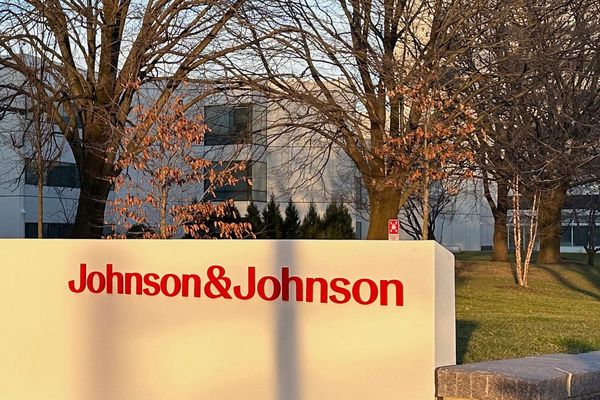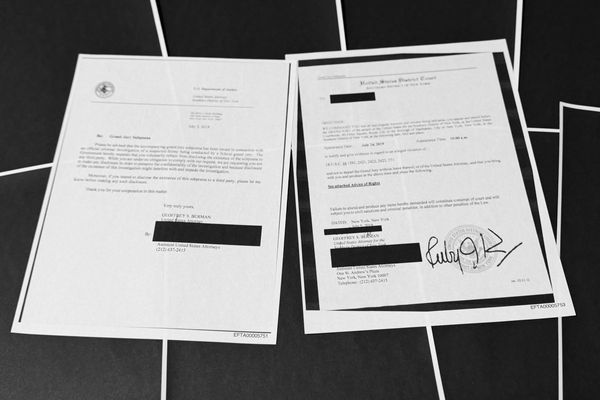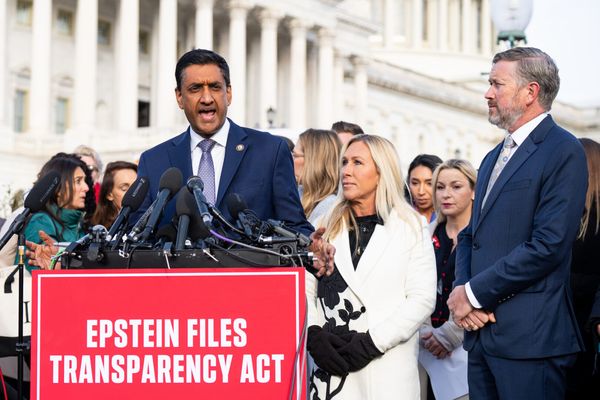If there were a “drug of the summer” award, Ozempic would win hands down. This Glucagon-Like Peptide 1 (GLP-1) receptor agonist, scientifically known as Semaglutide, was originally developed to treat type 2 diabetes. Today, it’s better known for delivering rapid, dramatic weight loss.
But Ozempic’s meteoric rise has brought increased scrutiny. Its manufacturer, Novo Nordisk, now faces a flood of lawsuits. Patients are alleging a wide range of side effects, from digestive issues to the more alarming claim of irreversible vision loss.
As Ozempic remains a focal point of ongoing medical research and cultural conversation, these lawsuits have placed the drug at the heart of a high-stakes legal battle. Here’s what you need to know about the controversy that’s reshaping public perception and corporate accountability.
Inside the Newest Wave of Ozempic Lawsuit Filings

Novo Nordisk is facing a rapidly escalating legal crisis, with thousands of individual lawsuits filed just this year.
In mass tort litigation, similar lawsuits are often consolidated into a Multidistrict Litigation (MDL) to streamline the legal process.
The Lawsuit Information Centre reports that MDL 3094 was created in February 2024 by the U.S. Judicial Panel on Multidistrict Litigation to handle the growing number of Ozempic-related cases.
This MDL also includes other semaglutide drugs like Wegovy and Rybelsus, along with Mounjaro, a dual GLP-1/GIP agonist.
At the time of its creation, the MDL contained just 55 cases. By August 2024, that figure jumped to 346. As of August 2025, there are 2,190 active cases, with plaintiffs claiming Novo Nordisk failed to adequately warn them about severe side effects.
Why Vision Loss Is the Flashpoint in the Ozempic Lawsuit
Drug Watch reports that most Ozempic lawsuits initially centered around gastroparesis, bowel obstruction, and cyclical vomiting syndrome. But over time, a growing number of users of Ozempic, Wegovy, and Rybelsus began reporting a rare eye condition called Non-Arteritic Anterior Ischemic Optic Neuropathy (NAION).
A July 2024 study published in the Journal of the American Medical Association (JAMA) Ophthalmology found a link between Ozempic use and NAION. Novo Nordisk has argued that many of the diabetic patients involved already faced a heightened risk of vision problems.
Then, in February 2025, a follow-up cohort study in the same journal showed a clearer increase in NAION risk among semaglutide users.
In June 2025, twenty-one NAION plaintiffs moved to consolidate their cases in New Jersey state court. This was notable not only because of the severity of the vision claims, but also because Novo Nordisk’s U.S. headquarters is located in Plainsboro, New Jersey. Plaintiffs aimed to challenge the company directly on its home turf.
This shift in focus from stomach issues to vision loss has changed the tone of the lawsuits entirely.
While gastrointestinal side effects can be managed over time, they rarely result in lasting disability (per Cleveland Clinic). NAION, on the other hand, can lead to sudden, irreversible optic nerve damage and permanent vision loss, as reported by the American Academy of Ophthalmology.
Plaintiffs suffering from vision loss often face total blindness or an inability to live independently. This makes their stories far more powerful to juries and increases the chances of large verdicts or punitive settlements.
What began as a product liability case is now a broader question of public health and corporate responsibility.
What Patients Are Saying

Beyond the clinical terms and legal jargon, it’s the personal stories that are shaping the Ozempic lawsuits. Some complaints include harrowing details of vision loss that paint a picture of suffering, corporate failure, and Big Pharma profit over patient safety.
One such story comes from James Norris, a mechanic in his late fifties who was prescribed Mounjaro for weight loss. NBC News reports that Norris was later diagnosed with NAION after his dosage was increased.
Another is Cheryl Bovee, a 56-year-old retail worker from North Carolina. She went legally blind after using Ozempic for her diabetes. In a New York Post interview, she said, “I no longer have the hope of seeing my grandchildren. I no longer have the hope of seeing their faces clearly. I can’t have any sort of independence…All of my hopes and dreams have been dashed.”
These firsthand accounts are a stark contrast to the glowing celebrity endorsements and social media hype that promoted Ozempic as a miracle weight loss drug.
The lawsuits have sparked widespread discussion on forums. A Reddit user said they had to stop using Ozempic due to temporary vision loss. Another shared that their vision became blurry for weeks after a dosage increase.
These firsthand accounts are now key in the broader legal and public debate, giving a human face to claims that might otherwise be buried in data and court filings.
Is There a Link Between Ozempic and Irreversible Vision Loss?
While Ozempic has been linked to vision loss through multiple studies and regulatory reviews, a direct causal relationship remains unproven. Research shows an elevated risk of developing Non-Arteritic Anterior Ischemic Optic Neuropathy (NAION) among users, but it’s still unclear whether the drug itself causes the condition.
Semaglutide mimics the GLP-1 hormone, which promotes feelings of fullness and triggers insulin release to regulate blood sugar.
The American Academy of Ophthalmologists explains that Ozempic may lead to sharp changes in blood sugar, which can alter the shape of the eye’s lens and cause temporary vision issues.
Another theory suggests that semaglutide reduces blood flow to the optic nerve, possibly triggering NAION and resulting in permanent vision damage. This condition is often called a “stroke of the optic nerve” (via Eye Physicians of Long Beach).
Complicating matters is the fact that diabetic patients are already at risk for NAION and other eye issues, making it challenging to isolate Ozempic as the direct cause.
However, a 2024 JAMA Ophthalmology study found that diabetic patients on semaglutide were over four times more likely to develop NAION than those on alternative treatments. The risk was even greater among overweight users, a key demographic for Ozempic.

While the authors emphasized that the data showed correlation, not causation, their work supported early plaintiff claims.
A follow-up study in 2025 echoed these findings, noting an uptick in vision-related complications among Ozempic users, even those without prior eye problems.
Then in August 2025, the European Medicines Agency officially listed NAION as a “very rare” side effect of semaglutide. According to the agency, it may affect up to 1 in 10,000 users after a year on the drug.
When a regulatory body confirms what plaintiffs are alleging, it significantly strengthens their case. The EMA also urged patients to seek medical attention immediately if they notice sudden vision changes.
Medical experts caution that more research is needed before drawing definitive conclusions. However, with growing evidence and regulatory acknowledgment, there is already considerable support for the ongoing mass tort litigation.
How the Legal Battle Is Evolving
Most Ozempic-related cases fall under MDL 3094, a multidistrict litigation focused on GLP-1 agonists. The core allegation is that Novo Nordisk failed to warn doctors and patients about the drug’s severe risks, including permanent vision loss and stomach paralysis.
In response, Novo Nordisk is expected to invoke long-standing legal doctrines that often shield pharmaceutical companies. One is the “learned intermediary doctrine,” which holds that the company’s duty is fulfilled once it warns the prescribing physician. The burden then shifts to the doctor to relay those risks to the patient.
Another likely defense is preemption. The Cornell Law School Legal Information Institute explains this as the idea that federal law, like the FDA’s approval process, can override state-level failure-to-warn claims.
Law firms like Morgan & Morgan, Motley Rice, and Seeger Weiss are leading the charge for plaintiffs. Each firm has a seat on the Plaintiffs’ Leadership Committee and is responsible for proving injury and showing Novo Nordisk knowingly withheld crucial safety information.
Beyond the MDL, some of the most serious NAION cases have been filed in New Jersey state court, where Novo Nordisk is headquartered. This legal strategy could invoke state consumer protection laws and create a more favorable path for plaintiffs.
All signs point to a long, high-stakes legal showdown that could reshape pharmaceutical accountability rules.
What Are the Stakes?
Novo Nordisk faces more than mounting legal fees. Its reputation and financial future may be on the line.
Early projections from Business Standard estimate that total payouts from the Ozempic lawsuits could exceed $2 billion. This figure factors in the severity of the injuries, long-term medical costs, lost income, and damages for pain and suffering.
The introduction of permanent vision loss into the litigation significantly raises the stakes. These NAION cases are now expected to serve as “bellwether” trials.
As Stanford University explains, bellwether trials are early cases used to gauge how juries might respond to evidence and arguments. A single major verdict favoring a NAION plaintiff could sharply increase Novo Nordisk’s overall liability and shape the size of future settlements.
In short, the outcome of these early NAION cases could determine the trajectory of the entire litigation.
Pharmaceutical Industry Is Responding to Mounting Pressure
Facing billions in potential liability, Novo Nordisk is rolling out a multifaceted strategy to defend itself. The company continues to deny any wrongdoing, maintaining that its GLP-1 drugs are safe when used as prescribed and already carry adequate warnings for known side effects.
Novo Nordisk has also launched a quiet media push. Business Standard reports the company is emphasizing that the off-label weight loss boom was driven by social media, exposing users to risks not accounted for in the drug’s intended use. In other words, many injuries may stem from misuse, not manufacturer failure.
Meanwhile, Novo Nordisk is cracking down on compounding pharmacies and telehealth clinics that sell unauthorized versions of its medications.
According to Pharmaceutical Technology, the company has filed over 132 lawsuits across 40 states and secured at least 44 permanent injunctions.
These legal moves serve two goals: tackling a public health risk and casting the company as a defender of drug safety. Novo Nordisk has also ramped public education efforts to warn against unsafe compounded products.
Altogether, these actions suggest the company may argue that any harm plaintiffs suffered came not from its FDA-approved drugs, but from unregulated alternatives.
The Broader Conversation
Ozempic’s transformation from a niche diabetes treatment to a cultural phenomenon has sparked wider debates about beauty standards, off-label drug use, and pharmaceutical ethics.

The drug’s popularity exploded as influencers and celebrities flooded social media with dramatic before-and-after shots, often touting effortless weight loss without the need for exercise or diet changes. Celebrity transformations helped feed the frenzy.
This viral demand extended far beyond Ozempic’s approved use, exposing a wider and more diverse population to potential side effects and setting the stage for today’s lawsuits.
The rise of Ozempic also fits into a larger shift around injectables and cosmetic trends, including procedures like the lip flip and transformations seen in figures like Kimberly Guilfoyle.
Of course, weight loss isn’t just aesthetic. In a world where 1 in 8 people are obese, drugs like GLP-1 agonists offer real medical benefits, especially for those with Type 2 diabetes, PCOS, or other metabolic issues.

Still, Ozempic highlights a recurring dilemma in medicine: mass adoption can reveal risks that clinical trials never uncovered.
For many, the benefits are real. However, for others, the cost only becomes clear after long-term, widespread use.
FAQ
Why was Ozempic discontinued?
Ozempic has not been discontinued. Only compounded versions of the drug have been discontinued.
How much will I get from the Ozempic lawsuit?
There are no final compensation or settlement amounts for the Ozempic lawsuits yet, since the legal process is still in its early stages.







